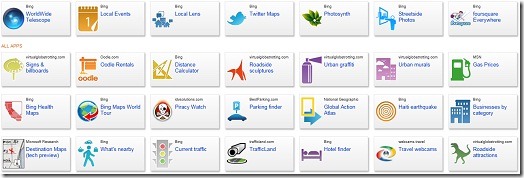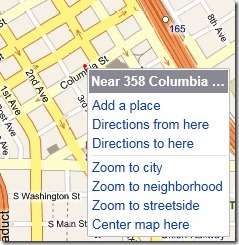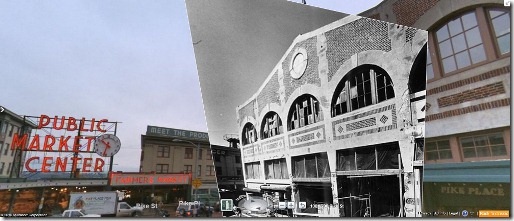Silverlight and Bing Maps delivers Innovation
 Today, the Bing Maps team is making some huge advancements to their site, platform and developer experiences. Back in December, 2009 Bing Maps released a Silverlight 3 version of their consumer site which helps users find locations, view maps and aerial photos, search for business listings and get driving directions. With the launch of the new Bing Maps site, users will be upgraded to Silverlight 4 which opens up several new features the Bing Maps team can use for rendering location-based information.
Today, the Bing Maps team is making some huge advancements to their site, platform and developer experiences. Back in December, 2009 Bing Maps released a Silverlight 3 version of their consumer site which helps users find locations, view maps and aerial photos, search for business listings and get driving directions. With the launch of the new Bing Maps site, users will be upgraded to Silverlight 4 which opens up several new features the Bing Maps team can use for rendering location-based information.

One of the key features for today’s release is the announcement of the Bing Map App SDK and a set of APIs for developers to build their own map app within Bing Maps. What’s a Bing Map App? A Bing Map App is an application loaded onto Bing Maps that pulls data from external web services into Bing Maps. Map Apps have been created with such services as foursquare, Flickr and Twitter and today the team is announcing new map apps from WeatherBug (Weather) and EveryScape (Indoor Panoramas). Building on the power of Silverlight, developers can now build their own map apps, test them on Bing Maps and upload into the Bing Maps Portal for submission into the Bing Map App Gallery. The Bing Map App APIs are using Bing APIs with Silverlight to create the most robust, powerful and aesthetically pleasing map apps.

Also, what would appear to be a minor feature, a significant ask from our users that is being granted thanks to Silverlight 4 is the ability to right-click. When users right-click on a location in Bing Maps they will now be presented with a menu of options. The top line item is a reverse lookup of the address near where the user clicked. This is enabled through the Silverlight experience to reverse a pixel on the screen that is associated with a lat/lon on the map. The lat/lon is then sent to a service to reverse geocode the point to find an approximate address. Other right click options allow users to (a) Add a location to saved places; (b) Directions to / from the respective point; (c) Zoom to city, neighborhood or Streetside; or, (d) Center the map. The move to Silverlight was made in an effort to provide a better user experience featuring Deep Zoom technology native to Silverlight 3. In addition Deep Zoom, the Bing Maps team publishes a custom 3D Managed Control that requires Active-X to communicate with the 3D, cloud-based system. The requirements for downloading, installing and running the Bing Maps 3D control have been a challenge to the team; thus, the Bing Maps team turned to the Silverlight team. With the advancements of 3D perspective within Silverlight, the proliferation of installs and expanded browser support by Silverlight it was an easy decision to begin publishing the Bing Maps site in Silverlight.
Because Silverlight’s interface for supporting 3D was so rich, the Bing Maps team continued to innovate by publishing Streetside imagery to Bing Maps. Streetside imagery is a human scale, ground level view of a location seen as if walking down the street. The Bing Maps team captures terabytes of data as part of their collection methods and much of that – depth maps, blurring masks (for privacy), building geometries (LIDAR) and imagery get published through Silverlight. It’s because Silverlight supports 3D perspective – depth and geometries specifically, that Bing Maps is able to make a rich, immersive environment such as Streetside for interacting with other data sets at ground level.

If you haven’t seen the potential power of Bing Maps and Silverlight together check out the Streetside Photos map app which geo-registers Flickr user photos with Streetside images; or, the Worldwide Telescope map app which pulls celestial information into the sky when looking up from Streetside; or, Blaise Aguera y Arcas’ TED video where he demonstrated live, streaming video over a 4G data network being augmented with auto-registration with Streetside photos.
Silverlight has been an incredible platform for Bing Maps to innovate mapping into places we’d only imagined in the past.